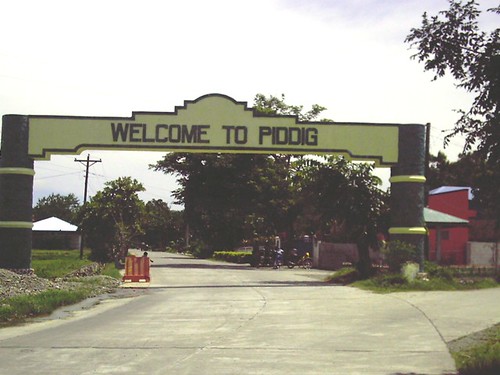http://dotregion1.com/home/v1/images/imageBank/imageBank_basi%20making.jpg
The Basi Revolt, also known as the Ambaristo Revolt, was a revolt who started in September 16,1807. It was led by Pedro Mateo and Salarogo Ambaristo and developed in Piddig, Badoc and other towns of Ilocos Norte. This revolt is unique as it revolves around the Ilocanos' love for basi ( sugarcane wine) but last but not least for Ilocanos love for freedom
In 1786, the Spanish colonial government manufacture and sale of basi, effectively banning private manufacture of the wine, which was done before expropriation. Ilocanos were forced to buy from government stores. However, wine-loving Ilocanos in Piddig rose in revolt on September 16, 1807.Spanish troops eventually quelled the revolt on September 28,1807, albeit with much force and loss of life on the losing side.
The flag used by the Basi Rebels
http://www.watawat.net/images/p034_1_00.jpg
Himagsikan Dahil Sa ‘Basi’
https://blogger.googleusercontent.com/img/b/R29vZ2xl/AVvXsEjjsp8tBRt73dacRndVBETB3AhMUvxIXZ5haIeAu4WO2uaS2TTe0lUHhFHB4glGL07O66oIG62fD_kpox7bLJRPHCld_S5cRfSJ5AW4xgaLBZ0QVNF2x2tyYpKs9ayOb-afeqDPYuoiTLo/s400/Basi_Revolt.jpg
SA dami ng mga himagsikan na ginanap sa
Ilocos, pinaka-tangi ng mga tagaruon ang aklasan dahil sa
basi, kapantay o higit pa, sa isip ng iba, sa himagsikan ni
Diego Silang nuong 1762-1764. Patibay nito: Hanggang ngayon, pinag-aagawan kung kangino talaga ang himagsikan ng
basi nuong 1807. Sa mga Español, ang ‘
El Alzamiento de Ambaristo’ (‘ang aklasan ni Ambaristo’) ay kagagawan ni
Salarogo Ambaristo, isang pinuno ng mga magsasaka (
campesinos, peasants). Sa mga taga-
Ilocos naman, ang naghimagsik ay si
Pedro Mateo, isang dating pinuno ng baranggay (
cabeza de barangay) ng
Piddig. ‘Kanang-kamay’ (
teniente, lieutenant) lamang daw niya si
Ambaristo.
http://2.bp.blogspot.com/-L2xQIjD5cpM/UHgMeaY6eNI/AAAAAAAABEA/UU9fYPk55YQ/s400/415749_479362068761022_1926158720_o.jpg
http://www.pia.gov.ph/press/image/110309-r1-dadapilan.jpg
Matagal nang nag-aklas si Ambaristo, pinatay kasi ang asawa niya ng isang oficial na Español. Maliban sa paminsan-minsang salakay sa bahay ng mga Español, walang nagawa ang kanyang maliit na pangkat ng mga magsasaka kundi magtago-tago sa mga bundok ng Piddig (‘mabundok’ ang kahulugan ng ‘piddig’ sa wika ruon) nuong cabeza pa si Mateo.
Kahit mula sa angkan ng maharlika (principalia, native elite) duon, hindi natanggap niMateo ang malupit na turing sa tao. Mainit ang ulo, ilang ulit siyang napa-away dahil ayaw tumulong, kinalaban pa, ang pagsamantala ng mga frayle at Español na sinimulang tawagin siyang ‘taksil’ (traidor).
Bilang
cabeza, alam ni
Pedro Mateo ang lahat ng lihim sa
Piddig, pati na kung saan ginagawa at itinatago ng mga tagaruon ang kanilang
basi upang hindi mailit (
confisca) ng mga Español at
principales na nagsisilbi sa kanila. Madalas tumalilis si
Mateo sa lalim ng gabi upang makipag-inuman ng
basi sa kanyang mga kanayon.
Bagaman at hindi siya nabisto kahit minsan ng mga frayle at ng mga alagad nitong
principales, lalong nag-init ang mga mata nila kay
Mateo na itinuring nilang ‘
traidor.’ Kaya nang nasaksak at napatay ang isang taga-
Piddig na kaibigan ni
Mateo, siya ang inusig ng mga Español. Pinaratang nilang naglasing silang dalawa ni
Mateo at nangnag-away, sinaksak ni
Mateo ang kaibigan. Nahatulan na mabilanggo nang 5 taon, nakalabas lamang si
Mateo nang
tubusin (
fianza, bail) ng kanyang
abogado sa halagang 200 pesetas.
Hindi pa rin siya pina-alpas ng mga frayle. Hinabla siya sa pinaka-mataas na hukuman (
corte suprema, supreme court) sa salang pagkalaban sa pamahalaan ng España. Humiling si
Mateo ng patawad mula sa Manila subalit tinanggihan siya at ipinadakip. Inutos din ng hukuman na
ilitin (
seize) ang kanyang bukid at mga ari-arian. Pati ang kanyang
familia ay inutos na
tiktikan (
surveillance).
Naglabas ang mga frayle ng
kasulatan (
documentos) at iba pang ‘
evidencias’ na mag-aaklas si
Mateo at ang kanyang mga kainuman. Mayruon pang ‘
mapa’ ng mga pinagtaguan ng mga
burnay ng
basi. Wala nang pag-asa, tumakas si
Mateo at nagtago sa mga bundok sa paligid ng
Piddig. Duon at nuon niya natagpuan at naka-panalig si
Ambaristo. Maliit lamang ang pangkat nila kaya nagkasundo ang dalawa na gamitin ang
pagsarili sa
basi upang yakagin ang mga taga-paligid na sumama sa kanilang mag-aklas laban sa Español.
Ang
San Ildefonso ay 2 nayon na lamang mula sa
Vigan. Tinahak ito ng
ilog Bantaoay at sa dalampasigan nito tinalo ng mga Español ang mga manghihimagsik nina
Mateo at
Ambaristo.
Umurong sila sa
Badoc subalit sumunod at pinaligiran sila ng hukbong Español hanggang nuong Septiembre 28, 1807, napasuko nila sina
Mateo at
Ambaristo. Kasama ang dalawa sa mga nabihag, kinaladkad at binitay sa liwasan (
plaza) ng
Vigan. Hindi pa
contento ang mga Español pagkatapos ng pagbitay,
sobra kasi ang takot na dinanas nila sa paghimagsik. Pinapugot nila ang ulo ng mga bangkay. Subalit nabigo ang kanilang tangka na hamakin ang mga naghimagsik at takutin ang mga taga-
Ilocos sapagkat itinanghal ng mga tao na
bayani (
caballeros, heros) sina
Mateo at
Ambaristo, at inalaala ang
luwalhati (
gloria) at kalayaang idinulot ng 14 araw ng himagsikan. Kahit nagwagi ang mga Español, sa mata ng mga taga-
Ilocos, sila pa rin ang ‘
contra-vida’ (
malditos, villains).
Pagkaraan ng 14 taon, hindi pa rin napawi ang parangal sa himagsikan ng mga tao sa
Ilocos, kaya nagpundar ang pamahalaan sa
Vigan nuong 1821 upang hamakin ang mga naghimagsik, purihin ang mga Español, at takutin ang mga tao na huwag nang maghimagsik uli. Inupahan nila ang isang
mestizong pintor sa
Vigan, si
Esteban Pichay Villanueva , upang ilarawan ang pagkatalo nina
Mateo at
Ambaristo, 14 larawan ng sunud-sunod na pangyayari nuong himagsikan dahil sa
basi.
Source:
http://www.elaput.org/chrm1807.htm













